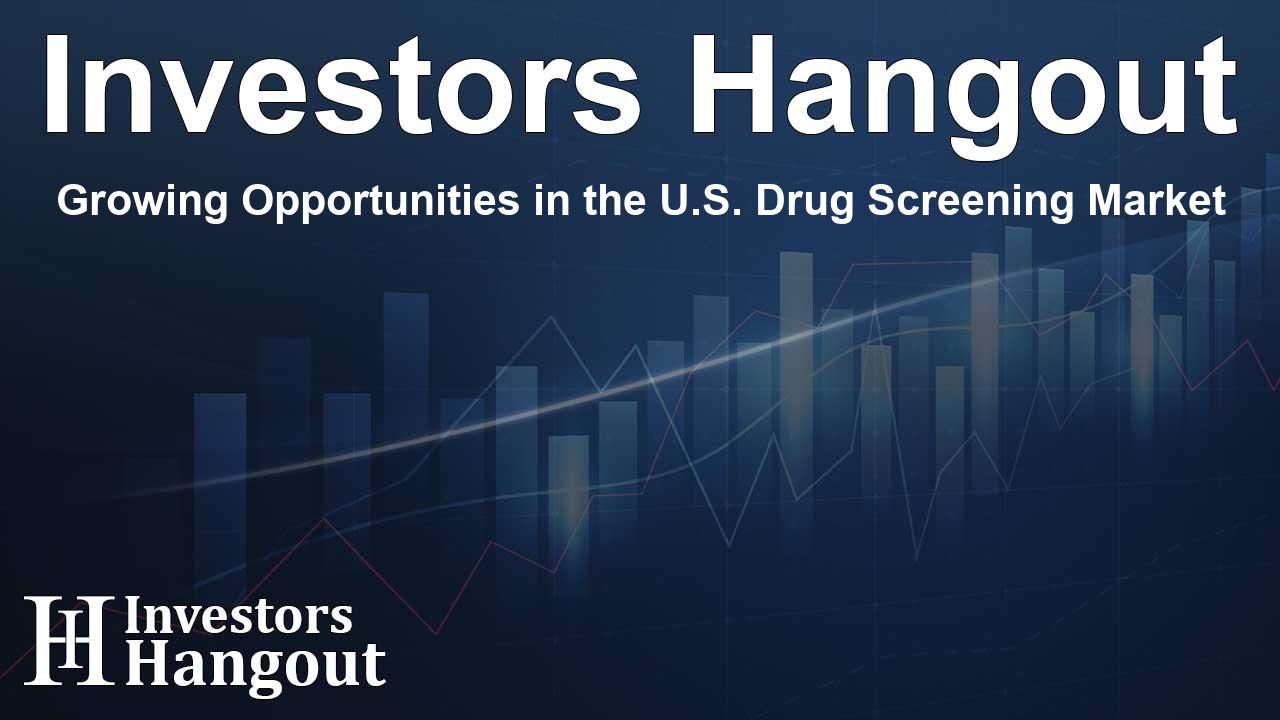Growing Opportunities in the U.S. Drug Screening Market

Revolutionizing Drug Testing in the U.S.
The U.S. drug screening market has been gaining significant momentum, projected to expand from its current value of USD 2.70 billion to an impressive USD 3.84 billion by 2034. This represents a compound annual growth rate (CAGR) of approximately 3.64%. The rise in market demand can be attributed to various factors, including increased substance abuse, enhanced testing technologies, and new regulations surrounding drug testing in various sectors.
Understanding the Drivers Behind Growth
The key driver of the U.S. drug screening market stems from the alarming increase in opioid misuse and the broader context of substance abuse across the nation. This crisis has spurred heightened awareness among healthcare providers, employers, and regulatory bodies about the necessity of drug testing. The federal government has played a pivotal role, mandating routine drug testing for employees in safety-sensitive positions, which further fuels the market's growth.
Increasing Adoption in Healthcare Settings
Healthcare settings are particularly affected by the opioid epidemic and the necessity for rigorous drug screening protocols. With the prevalence of addictions requiring management and monitoring, drug screening services are becoming integral to patient care. Healthcare institutions utilize various testing methods to ensure patient safety and effectiveness of treatment protocols, leading to a surge in demand for drug screening services.
Market Trends and Innovations
As the market for drug screening expands, several trends are emerging that illustrate the evolving nature of drug testing methodologies. The focus is shifting towards the application of non-invasive testing methods and rapid result technologies, significantly impacting the standard practices in workplaces and rehabilitation centers. These innovations are enhancing the reliability and efficiency of drug tests.
Emerging Technologies in Drug Screening
Companies are now investing in advanced detection technologies, including chromatography and rapid testing devices. These technical advancements provide accurate results faster than ever before, making it easier for organizations to implement testing without disrupting operations or endangering employee privacy. The market for rapid drug testing devices shows promising growth due to these factors, appealing to both users and providers alike.
Regional Insights and Market Dynamics
The Southern and Midwest regions of the United States have emerged as leaders in the drug screening market due to their robust manufacturing and logistics sectors. These areas have stringent safety standards, making an extensive drug screening policy a necessity. This regional demand is pushed further by a notable increase in innovation around testing technologies, particularly those that address recent cannabis regulations and synthetic drug use.
Shifting Regulations and Their Impact
Alongside these regional dynamics, changes in regulations are also shaping the future of drug screening. For instance, some states are modifying their testing protocols to focus on current impairment rather than historical use, particularly regarding cannabis. This shift not only influences corporate drug policies but also the entire framework of drug screening across the U.S.
Key Market Players and Competitive Landscape
The competitive landscape of the U.S. drug screening market includes notable companies such as Quest Diagnostics and Laboratory Corporation of America Holdings (LabCorp). These players lead the field not only through their testing services but are also pivotal in developing and innovating new testing technologies that enhance accuracy and reduce processing times. Additionally, collaborations and investments within the industry signal a strong push toward market advancement.
The Future Outlook
Given the rapid growth forecasted, the U.S. drug screening market will likely experience notable changes and challenges. Innovations in oral fluid testing and advancements in synthetic drug detection methods are expected to shape the market further. However, there is also a critical need for ongoing adaptation to the evolving landscape of drug composition, especially in response to newly emerged synthetic substances, making this an exciting area of development for years to come.
Frequently Asked Questions
What is the projected market size of the U.S. drug screening market by 2034?
The U.S. drug screening market is projected to reach USD 3.84 billion by 2034.
What factors are driving the growth of the drug screening market?
The primary drivers include the rise in opioid misuse, stringent regulations on drug testing, and advancements in testing technologies.
Which regions are leading the U.S. drug screening market?
The Southern and Midwest regions dominate the market due to their strong manufacturing sectors and safety regulations.
What are the common testing methods used in drug screening?
Common methods include urine testing, oral fluid testing, and laboratory-based services, often utilizing advanced chromatography techniques.
What is the impact of changing regulations on the drug screening market?
Regulations are increasingly focusing on current impairment rather than past use, particularly with cannabis, significantly altering workplace testing policies.
About The Author
Contact Olivia Taylor privately here. Or send an email with ATTN: Olivia Taylor as the subject to contact@investorshangout.com.
About Investors Hangout
Investors Hangout is a leading online stock forum for financial discussion and learning, offering a wide range of free tools and resources. It draws in traders of all levels, who exchange market knowledge, investigate trading tactics, and keep an eye on industry developments in real time. Featuring financial articles, stock message boards, quotes, charts, company profiles, and live news updates. Through cooperative learning and a wealth of informational resources, it helps users from novices creating their first portfolios to experts honing their techniques. Join Investors Hangout today: https://investorshangout.com/
The content of this article is based on factual, publicly available information and does not represent legal, financial, or investment advice. Investors Hangout does not offer financial advice, and the author is not a licensed financial advisor. Consult a qualified advisor before making any financial or investment decisions based on this article. This article should not be considered advice to purchase, sell, or hold any securities or other investments. If any of the material provided here is inaccurate, please contact us for corrections.
